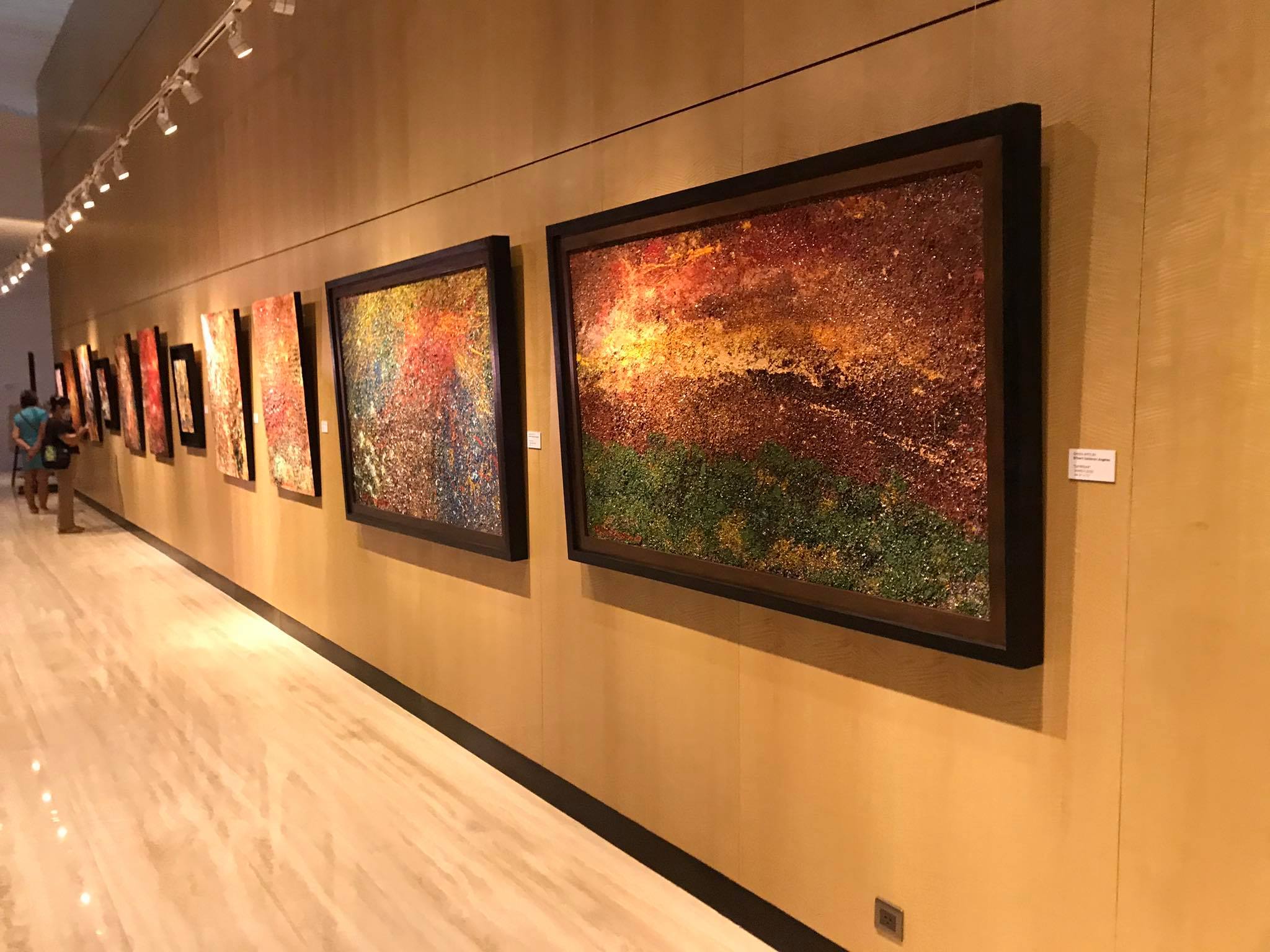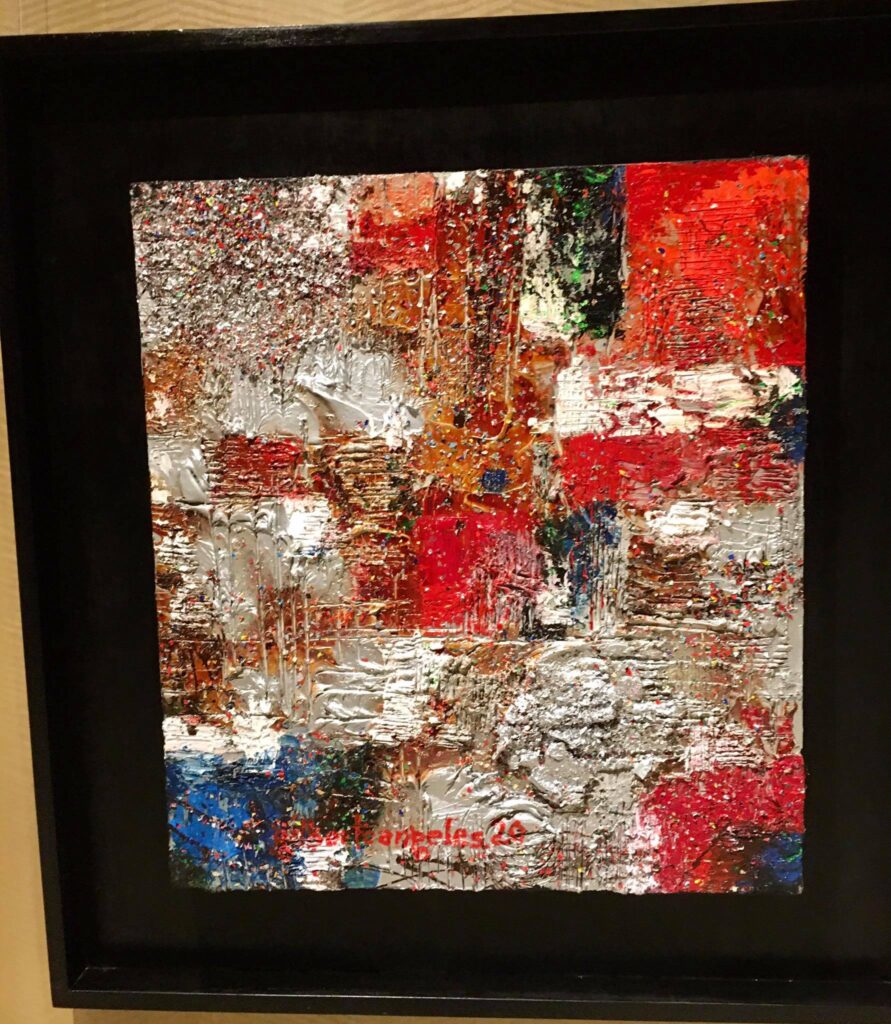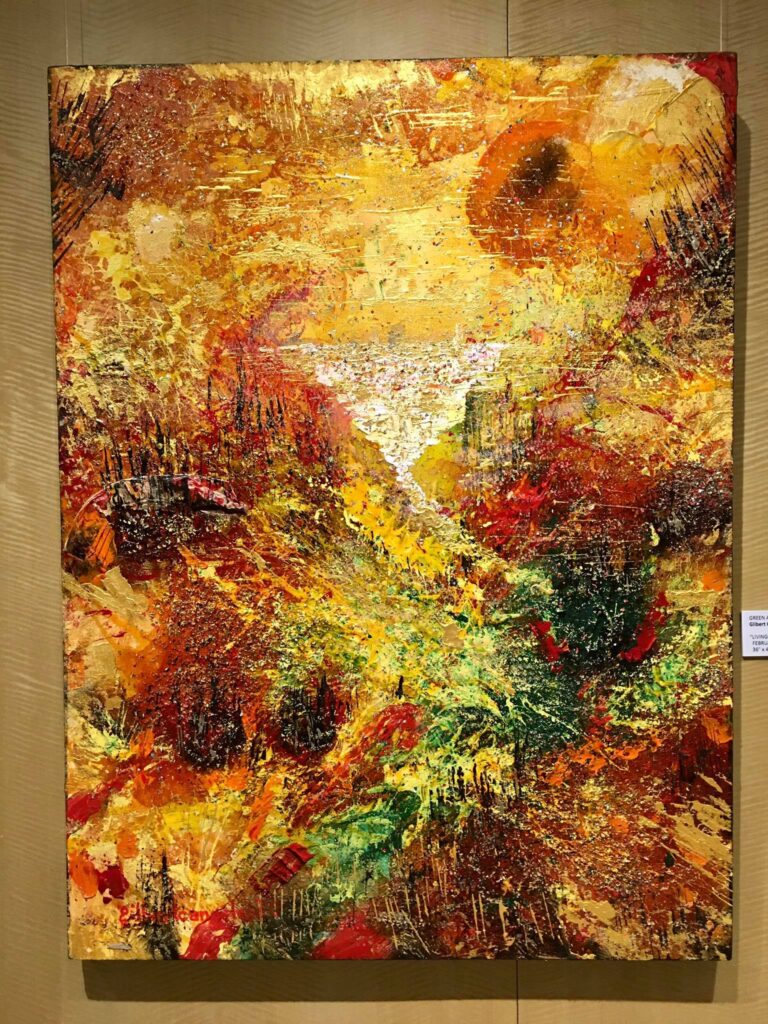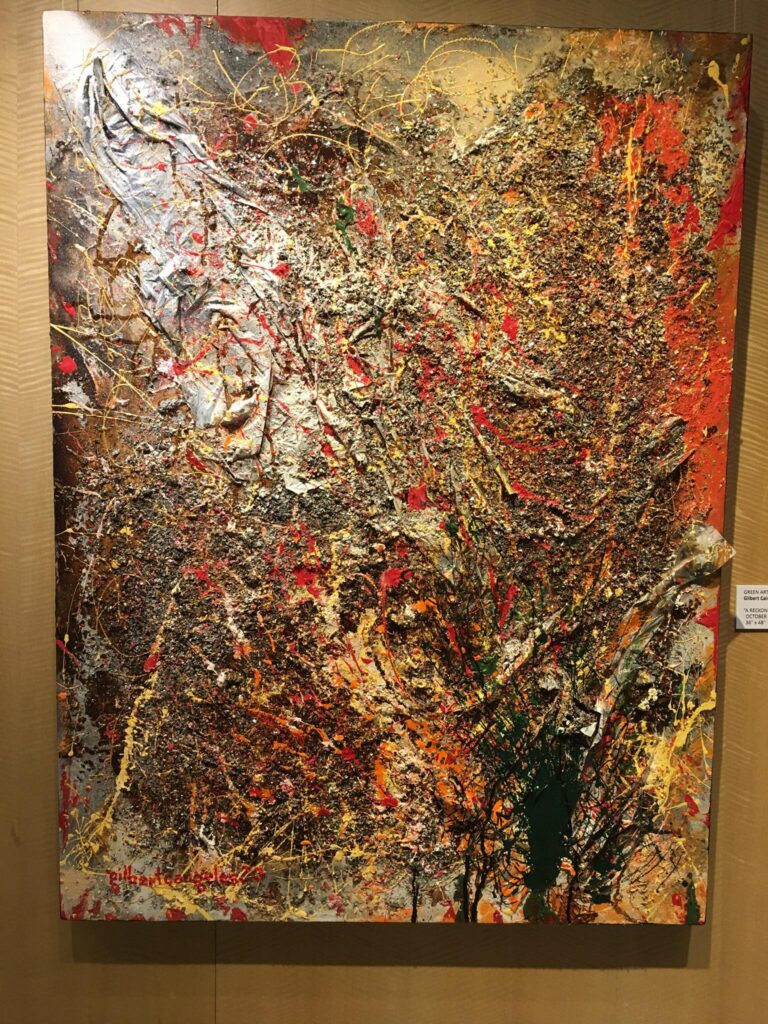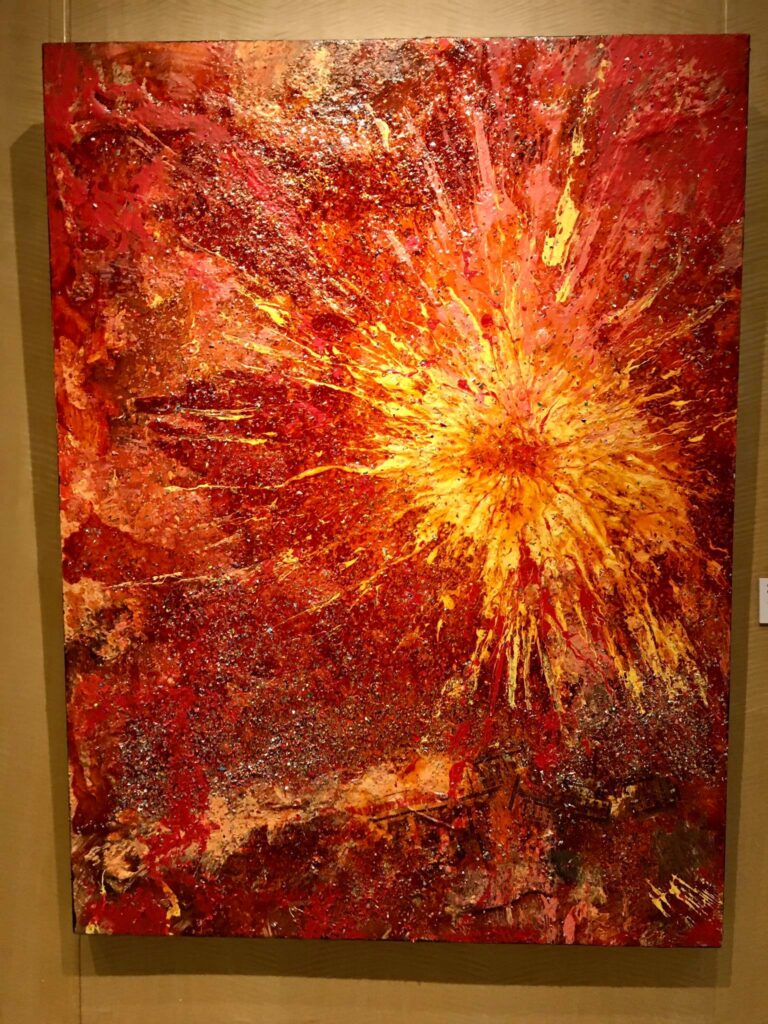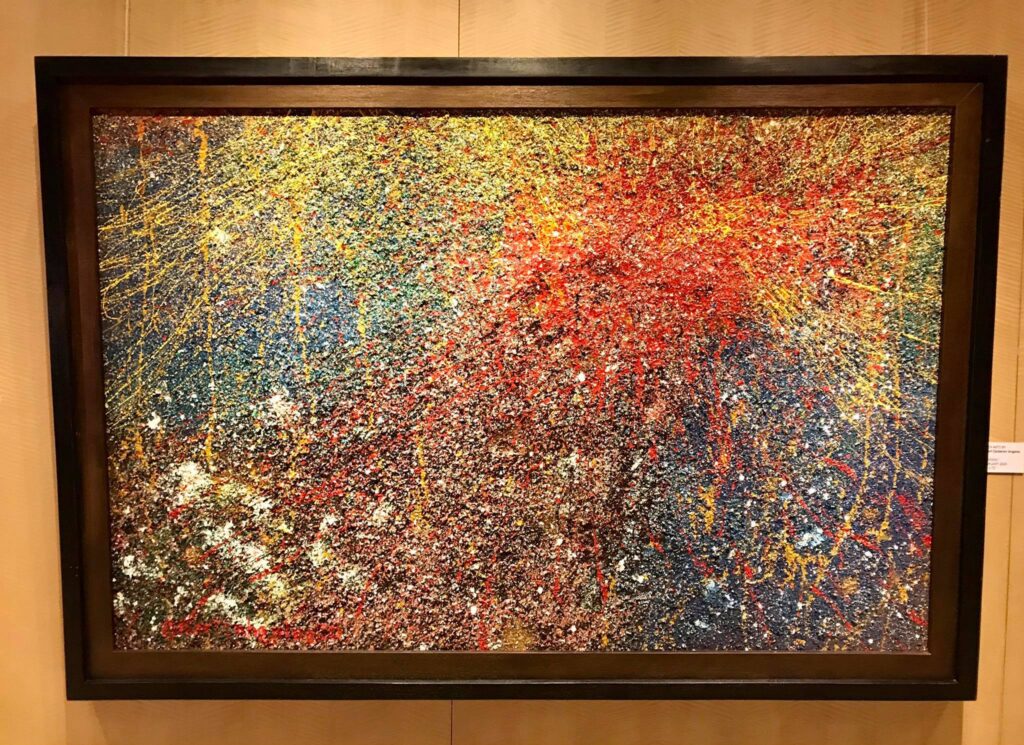Gilbert Angeles, Conrad Manila’s featured artist, showcases his artworks consisting of “abstractions.” Made partly of used and shredded plastic sachets, his masterpieces are anything but dull and predictable. Ongoing until May 9, the show is also a primary example of “post-consumer waste art.”
Text and photos by Alex Y. Vergara
Talent as well as a bit of serendipity played a role in helping bolster artist Gilbert Calderon Angeles’ career as an exponent of “post-consumer waste art.” The Plaridel, Bulacan native took up Fine Arts at the University of Santo Tomas, but it was only after taking up Nursing and then becoming a businessman and teacher that he finally found his way and hit his stride in the world of visual arts.
Not to be confused with found art, which primarily uses and combines discarded and disparate objects to form new art pieces, post-consumer waste art, as Gilbert practices it, is the use and reuse of plastic waste such as single-use sachets. Considered as one of the biggest sources of pollutants in the country, these plastic sachets are shredded to become the base for the artist’s abstract pieces that come alive, thanks to his generous and spontaneous use of acrylic paint in whatever vivid hues he fancies.

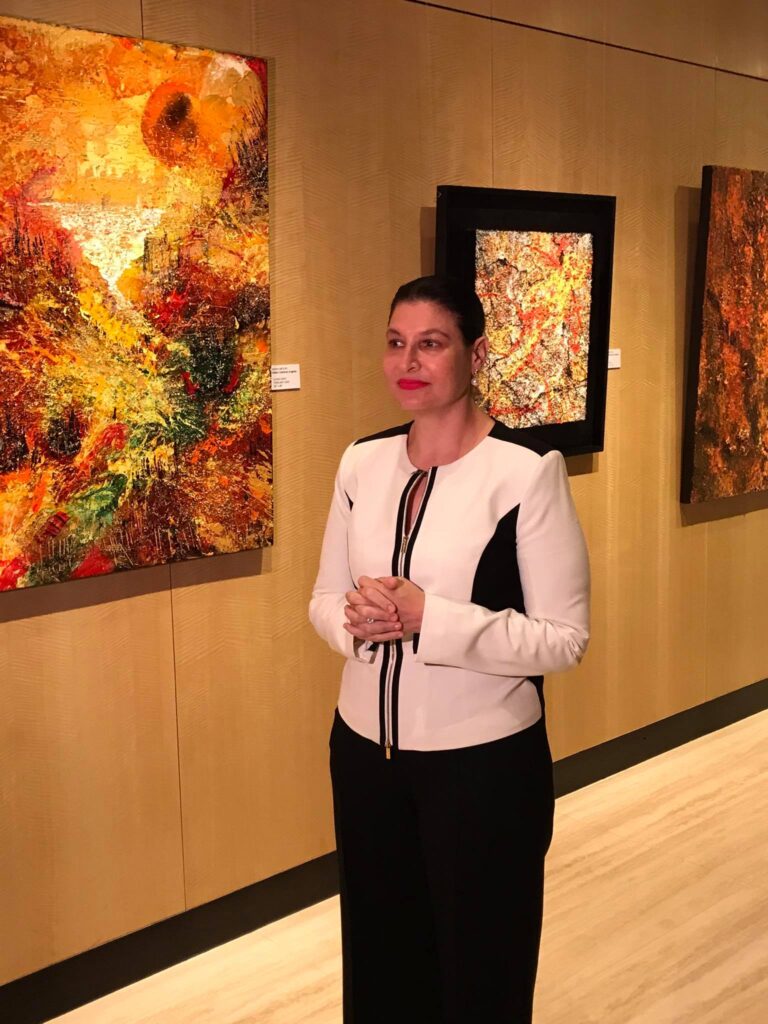
Combined with plastic varnish as a hardener and sometimes such everyday objects as foam fruit nets, glossy images from books, plastic shopping bags and even face masks, the artworks are mixed media masterpieces that are unique in and of themselves. Even Gilbert confesses that he can never duplicate any of his artworks, as he follows no exact formula.
“I have an idea in my head, but I don’t follow a sketch or outline while I work,” he says. “Everything is based on how I feel at the moment. More often than not, the result is not what I originally had in mind.”
As the featured artist of Conrad Manila, Gilbert’s latest art exhibit, consisting of nearly 30 paintings with such thought-provoking titles as “A Reckoning,” “Intertwined,” “Waste Land” and “Help Kelp!!!”, are displayed at the hotel’s Gallery C. Co-presented with Green Artz and dubbed as “Of Art and Wine: New Earth, New Life, New Hope,” the exhibit will run until May 9.
Also gracing the opening were Conrad Manila GM Linda Pecoraro, SM Hotels and Conventions Corp. executive consultant Nes Jardin and Green Artz co-founder Rommel Benig.
Road to environmental art
Gilbert’s journey to becoming not just a full-fledged artist, but also one who advocates environmental preservation is a story in and of itself. Like all struggling artists trying to find their footing, he went through the usual route of painting landscapes, flora and fauna and still life during his younger days. For some reason, he never really found himself as an artist through such subjects.
“Exploring such subjects didn’t resonate with me,” he shares. “And true enough, when I met a seasoned artist, who later became my friend, years later, he told me not try to force myself to copy or draw inspirations from anyone. Because if I do, it wouldn’t be me anymore.”
In due time, he focused his attention in fulfilling his other dream of working abroad by taking up Nursing. But after finishing the course, that dream didn’t pan out as well, as Gilbert pursued other interests and sources of livelihood, including opening a school and teaching.
But his innate talent and longing to be recognized as an artist never left him. And thanks to his Nursing background, particularly in chemistry, it became easier for him, he says, “to discover the material reaction between paint and single use plastic.”
Since plastic, he adds, is also made of oil, it readily binds with oil, acrylic and even enamel. He stumbled upon the material in its shredded form while working for a construction company in 2012. Since the company wasn’t into art, it was using the material instead as a component in making bricks.
“Since plastic is also made of oil, it also makes sense to use it in painting,” says Gilbert. And, true enough, the material, when combined with either acrylic or oil paint, proved to be a welcome addition to the comeback artist, who, upon his return to the art world in 2019, abandoned his much earlier attempts to ape the styles of established names in favor of his own brand of abstractions. Soon enough, he began experimenting with his new-found material by judiciously adding everyday objects on the canvas as part of his statement.
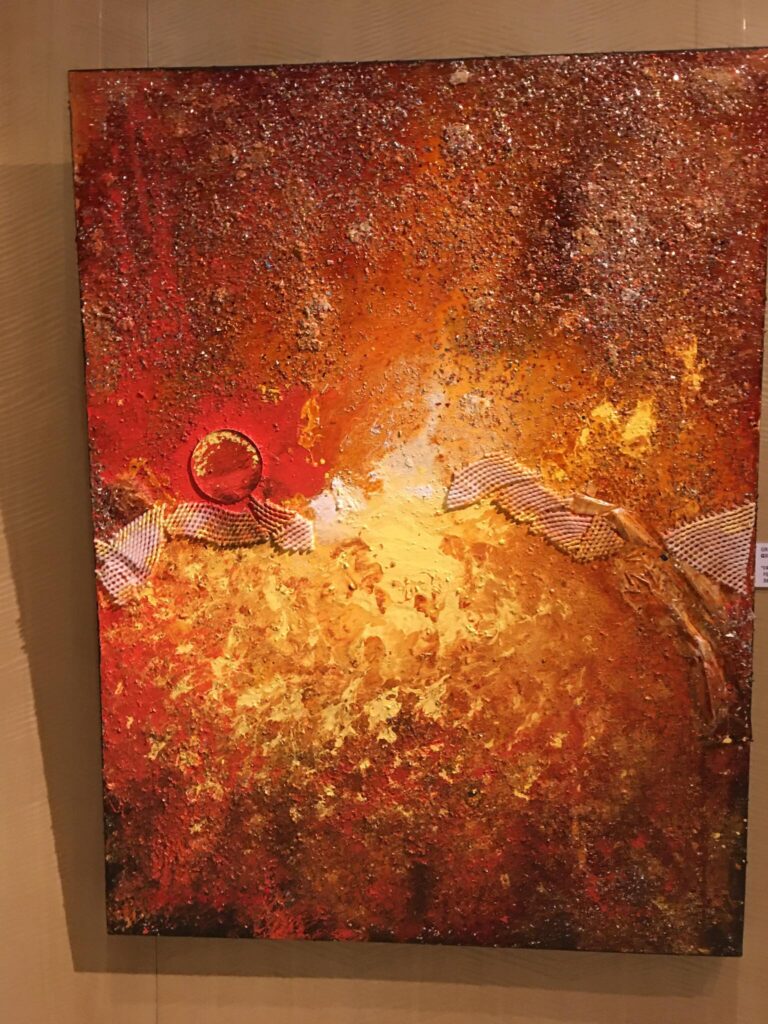
His art found him
“Again, this is not found art,” he reiterates. “It is more of a case of my art finally finding me. Whenever I start working on a piece, I ask God to show Himself to me. In the absence of any sketches or studies, everything I do is almost spontaneous or based on gut feel.”
When Gilbert is in the mood, he can finish an entire painting in four hours. The longest time he spent so far on a particular piece is two weeks. There have been times when his artwork is already finished only for the artist to completely “overhaul” it by covering it with several new layers of color and material.
Interestingly, one of his featured pieces at Gallery C looks uncannily like the trademark abstract patchwork on canvas done by Ivan Acuña. Gilbert, who considers Ivan, a fellow Bulakeño, his friend, makes no attempt to deny it.
“I sometimes try to fool people by telling them that this is really an Ivan Acuña,” he says with a laugh, as he leads us to the particular piece. “I was thinking of him when I did that.”
By far, one of his favorites is “A Reckoning,” Gilbert’s interpretation of God’s hand reaching out to humankind. Apart from using layers of shredded plastic and acrylic, what makes the particular artwork interesting is the artist’s use of a plastic “sando” bag, which is barely discernible from afar because of all the colors and textures. He says he’s currently exploring the possibility of incorporating an unused PPE in one of his future pieces.
Should somebody beat you to buying “A Reckoning,” for instance, the artist, sorry to say, won’t be able to produce something that even looks anywhere near it. Apart from the random nature of his art, he also often uses old or discarded paints in keeping with his environmental advocacy. Once an old batch of paints run out, then that’s it. In Gilbert’s art, the only thing that’s constant is his use of shredded pieces of used plastic sachets.

